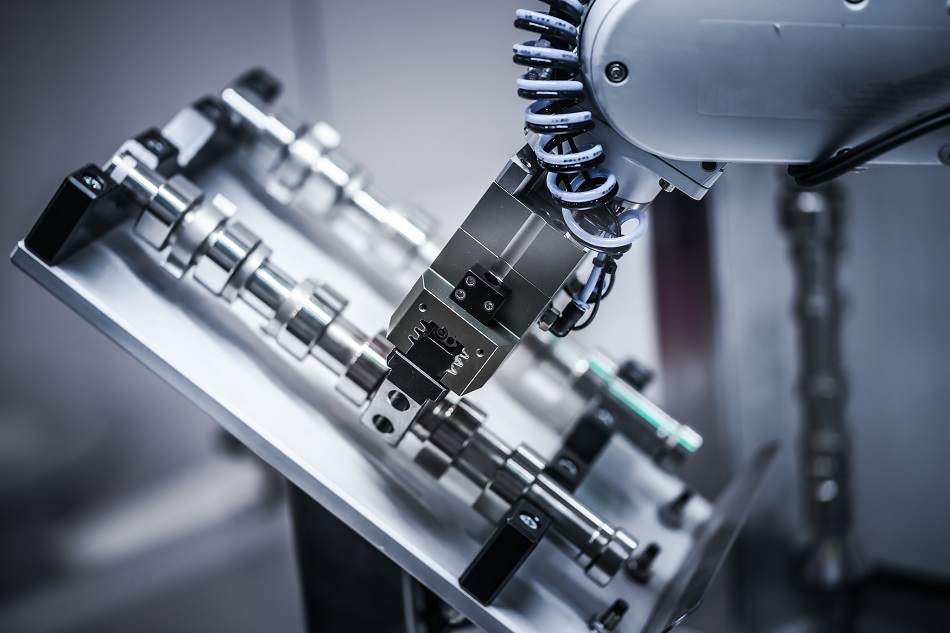
Image Credit: Andrey Armyagov/Shutterstock.com
The interdisciplinary research field of robotics has captured the public imagination since the first descriptions of automata appeared in ancient Chinese Lie Zi texts over two thousand years ago.
This is largely due to the inherently fascinating endeavor of robotics: to create intelligent machines that can move, work, and support human life autonomously of human control.
In September last year, a team of physicists and mechanical engineers from Georgia Institute of Technology and North-western University in the United States published new research which takes the field of robotics a step further in the quest for intelligent machines.
These new robots are composed of several smaller robots, each of which has its own ‘brain’ and reacts to inputs with desired outputs independently.
The researchers (William Savoie, Thomas A. Berrueta, Zachary Jackson, Ana Pervan, Ross Warkentin, Shengkai Li, Todd D. Murphey, Kurt Wiesenfeld, and Daniel I. Goldman) demonstrated how a robot made of smart robot components, each of which cannot move independently, was able to move as a unit with algorithmic programming.
Functional Components
This recent intervention in the field of robotics, published in Science Robotics, looks forward to the future of industry where robots will become, “Robust and flexible entities composed of functional components.”
This direction is a move away from traditional means of robot locomotion, which relied on, “Single-purpose components, like actuators, sensors, body segments, and limbs.”
To theoretically and experimentally demonstrate this new way of making robots move, the research team created several machines around the size of a smartphone.
These were fitted with processing chips, brains, and mechanical arms which could flap up and down, but could not move the component device by themselves.
Smart Teamwork
These smart, active particles, dubbed by the team as ‘smarticles’, were capable of computer intelligence and simple processing power. Thanks to this intelligence, the smarticles were able to finally work together in a unit to achieve locomotion.
Here, robotics has historically been faced with an engineering conundrum. In the words of the researchers, “Control of such a collective becomes a challenge because synthesis techniques typically assume known input-output relationships.”
Instead of pre-programming all the relationships between their smarticles, and between the smarticles and the application’s environment, the researchers leaned into a ‘stochastic’ (random) solution.
Through algorithmic programming, the robots were able to independently coordinate their efforts so that when they were connected by a plastic ring, they could move as one unit. The team called this unit a ‘supersmarticle’.
Next Steps
The team behind this supersmarticle intervention, a robot made of robots, hope that their research can pave the way for a new generation of useful autonomous machines. The model for a smarticle system, they suggested, could help other researchers in robotics to discover principles for stochastic robotics in the future.
These principles would help in the development of robots that are increasingly autonomous, with decentralized control systems that could include input/output systems at various levels of the whole system.
In this way, the total mechanical interactions experienced by each part of the robot system contributes to the ability of the whole system to perform tasks independently of user control.
It is not only for locomotive robots that such principles can be useful. Whether they are used in smart electricity grids, industrial automation, or the Internet of Things, all kinds of decentralized control systems could benefit from a better understanding of the ways in which programmed machines can work together without the need for human intervention.
Sources and Further Reading
Savoie, W., Berrueta, T.A., Jackson, Z., Pervan, A., Warkentin, R., Li, S., Murphey, T.D., Wiesenfeld, K. and Goldman, D.I. (2019). A robot made of robots: Emergent transport and control of a smarticle ensemble. Science Robotics, 4(34), p.eaax4316. DOI:10.1126/scirobotics.aax4316
Disclaimer: The views expressed here are those of the author expressed in their private capacity and do not necessarily represent the views of AZoM.com Limited T/A AZoNetwork the owner and operator of this website. This disclaimer forms part of the Terms and conditions of use of this website.